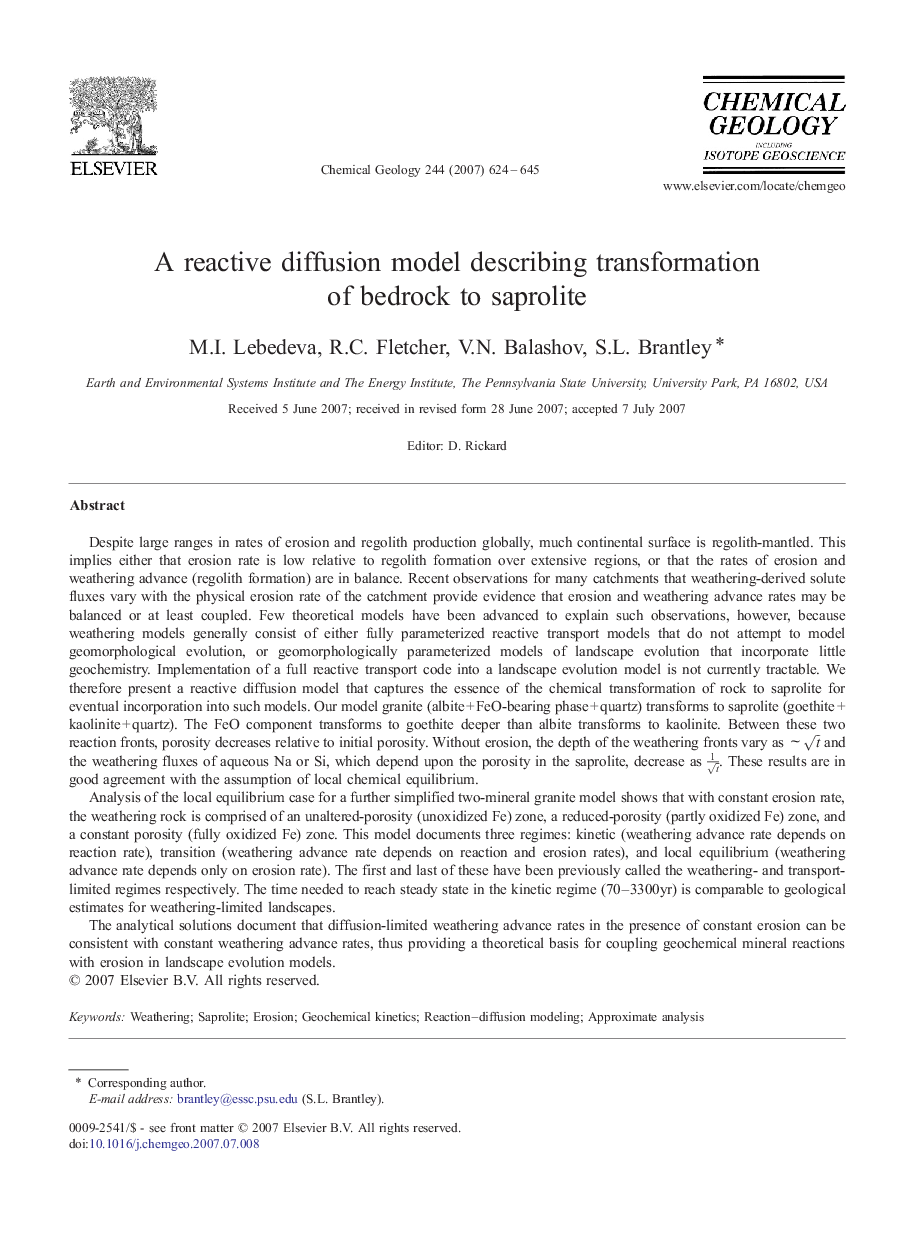| کد مقاله | کد نشریه | سال انتشار | مقاله انگلیسی | نسخه تمام متن |
|---|---|---|---|---|
| 4700911 | 1637741 | 2007 | 22 صفحه PDF | دانلود رایگان |

Despite large ranges in rates of erosion and regolith production globally, much continental surface is regolith-mantled. This implies either that erosion rate is low relative to regolith formation over extensive regions, or that the rates of erosion and weathering advance (regolith formation) are in balance. Recent observations for many catchments that weathering-derived solute fluxes vary with the physical erosion rate of the catchment provide evidence that erosion and weathering advance rates may be balanced or at least coupled. Few theoretical models have been advanced to explain such observations, however, because weathering models generally consist of either fully parameterized reactive transport models that do not attempt to model geomorphological evolution, or geomorphologically parameterized models of landscape evolution that incorporate little geochemistry. Implementation of a full reactive transport code into a landscape evolution model is not currently tractable. We therefore present a reactive diffusion model that captures the essence of the chemical transformation of rock to saprolite for eventual incorporation into such models. Our model granite (albite + FeO-bearing phase + quartz) transforms to saprolite (goethite +kaolinite + quartz). The FeO component transforms to goethite deeper than albite transforms to kaolinite. Between these two reaction fronts, porosity decreases relative to initial porosity. Without erosion, the depth of the weathering fronts vary as ∼t and the weathering fluxes of aqueous Na or Si, which depend upon the porosity in the saprolite, decrease as 1t. These results are in good agreement with the assumption of local chemical equilibrium.Analysis of the local equilibrium case for a further simplified two-mineral granite model shows that with constant erosion rate, the weathering rock is comprised of an unaltered-porosity (unoxidized Fe) zone, a reduced-porosity (partly oxidized Fe) zone, and a constant porosity (fully oxidized Fe) zone. This model documents three regimes: kinetic (weathering advance rate depends on reaction rate), transition (weathering advance rate depends on reaction and erosion rates), and local equilibrium (weathering advance rate depends only on erosion rate). The first and last of these have been previously called the weathering- and transport-limited regimes respectively. The time needed to reach steady state in the kinetic regime (70–3300yr) is comparable to geological estimates for weathering-limited landscapes.The analytical solutions document that diffusion-limited weathering advance rates in the presence of constant erosion can be consistent with constant weathering advance rates, thus providing a theoretical basis for coupling geochemical mineral reactions with erosion in landscape evolution models.
Journal: Chemical Geology - Volume 244, Issues 3–4, 15 October 2007, Pages 624–645